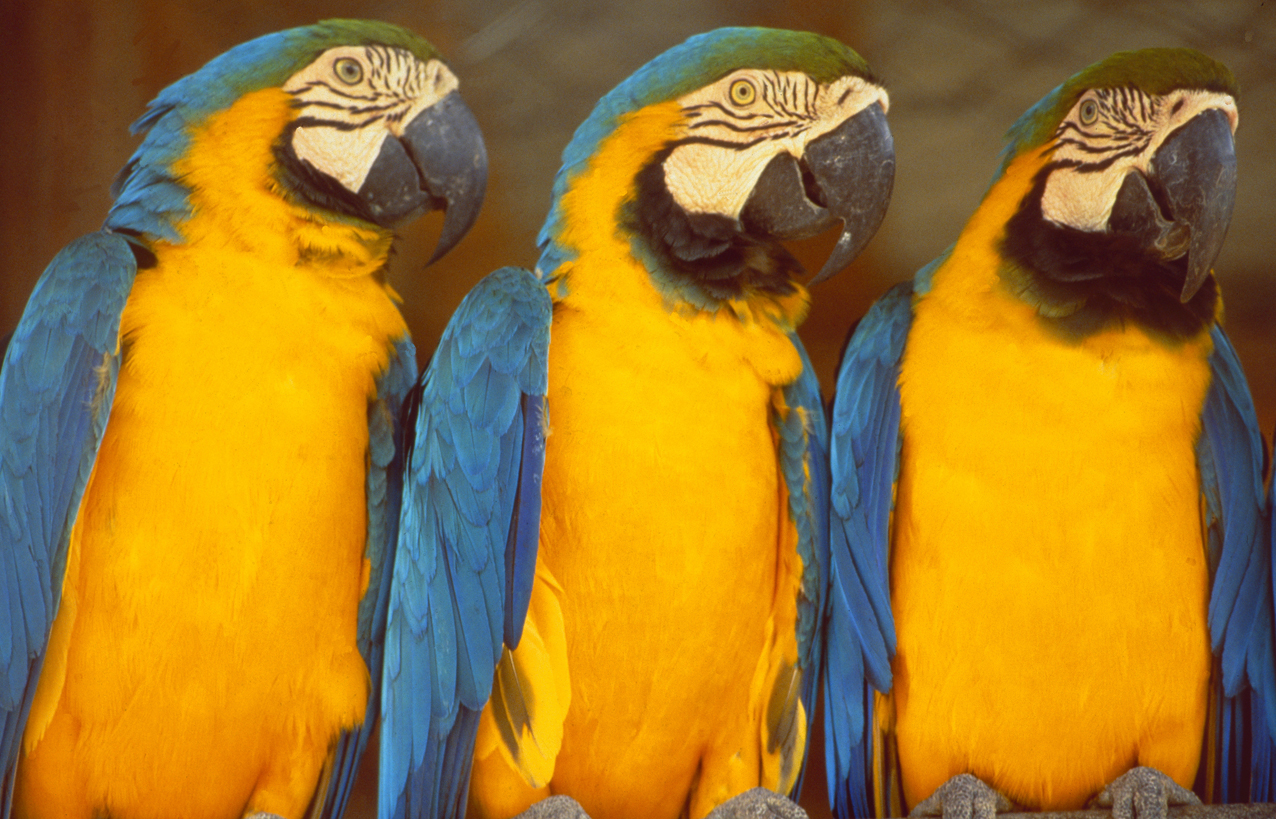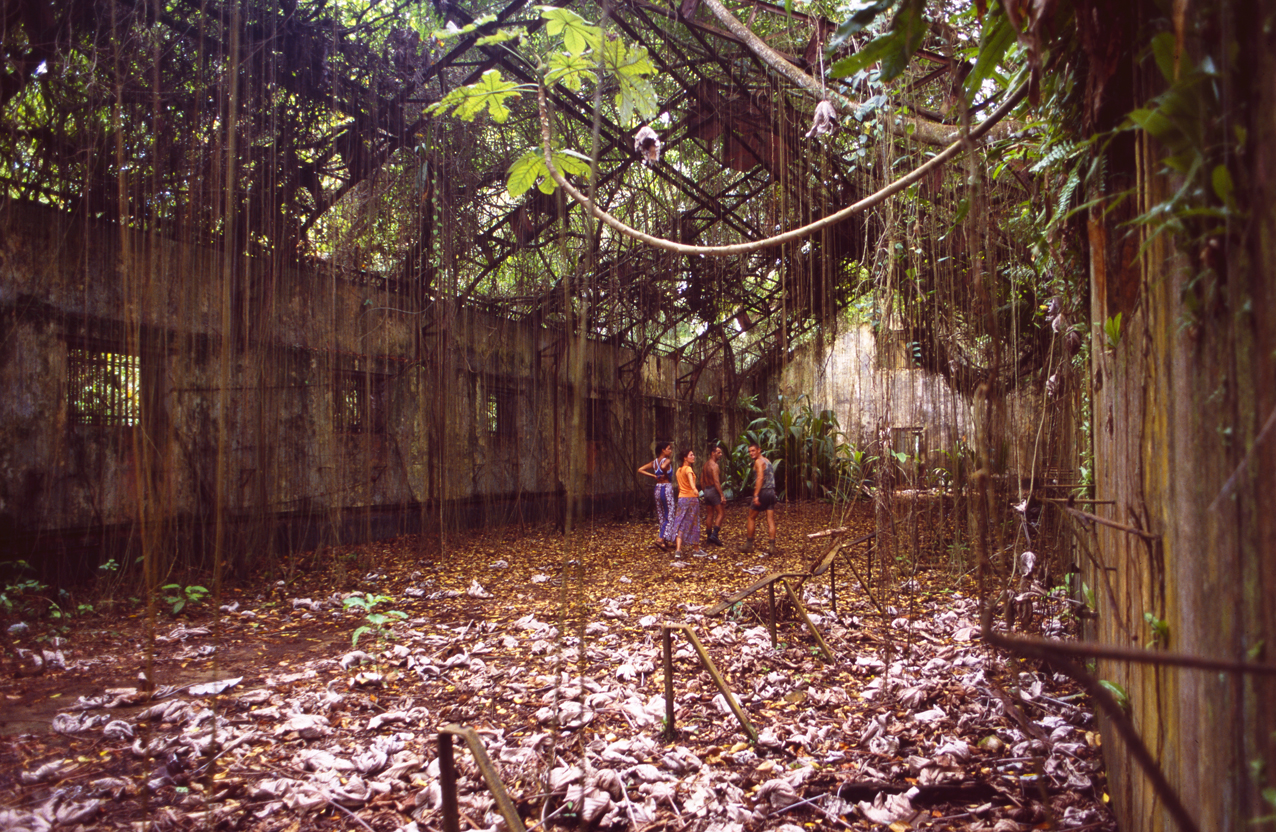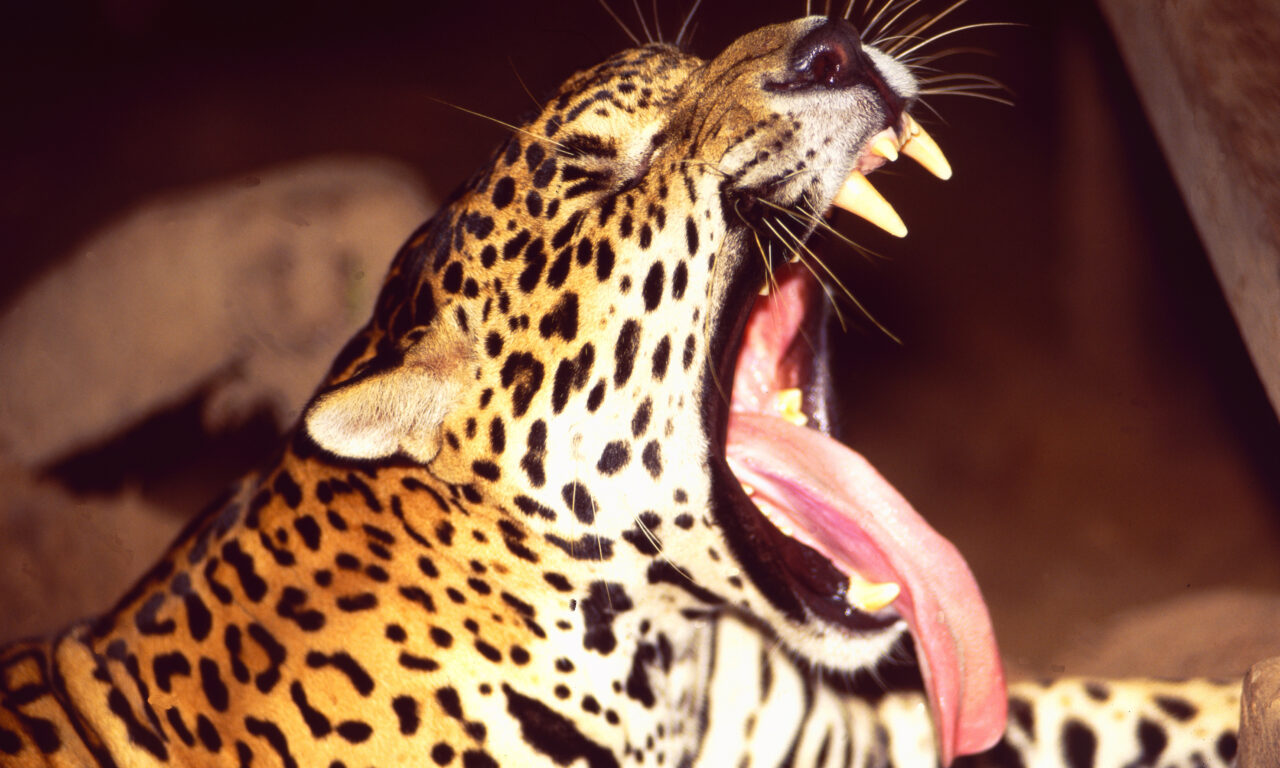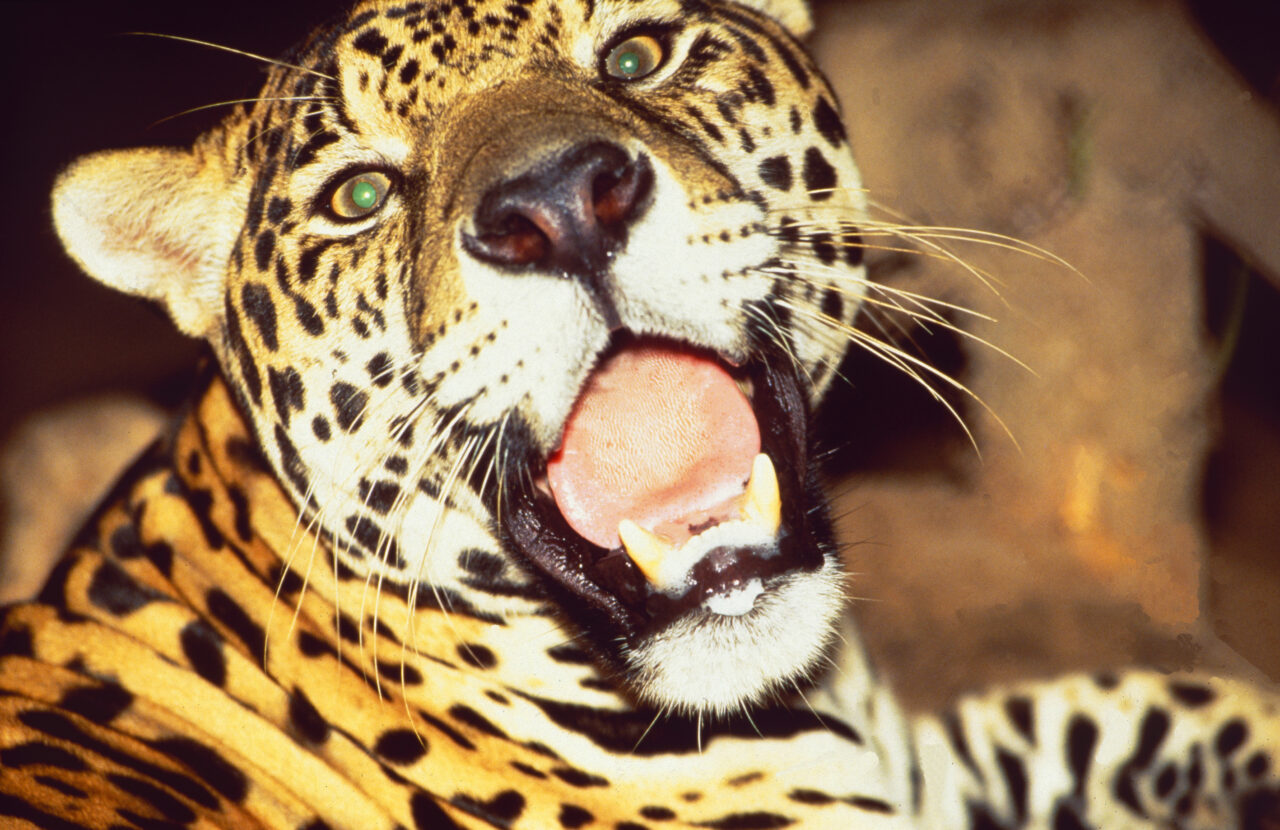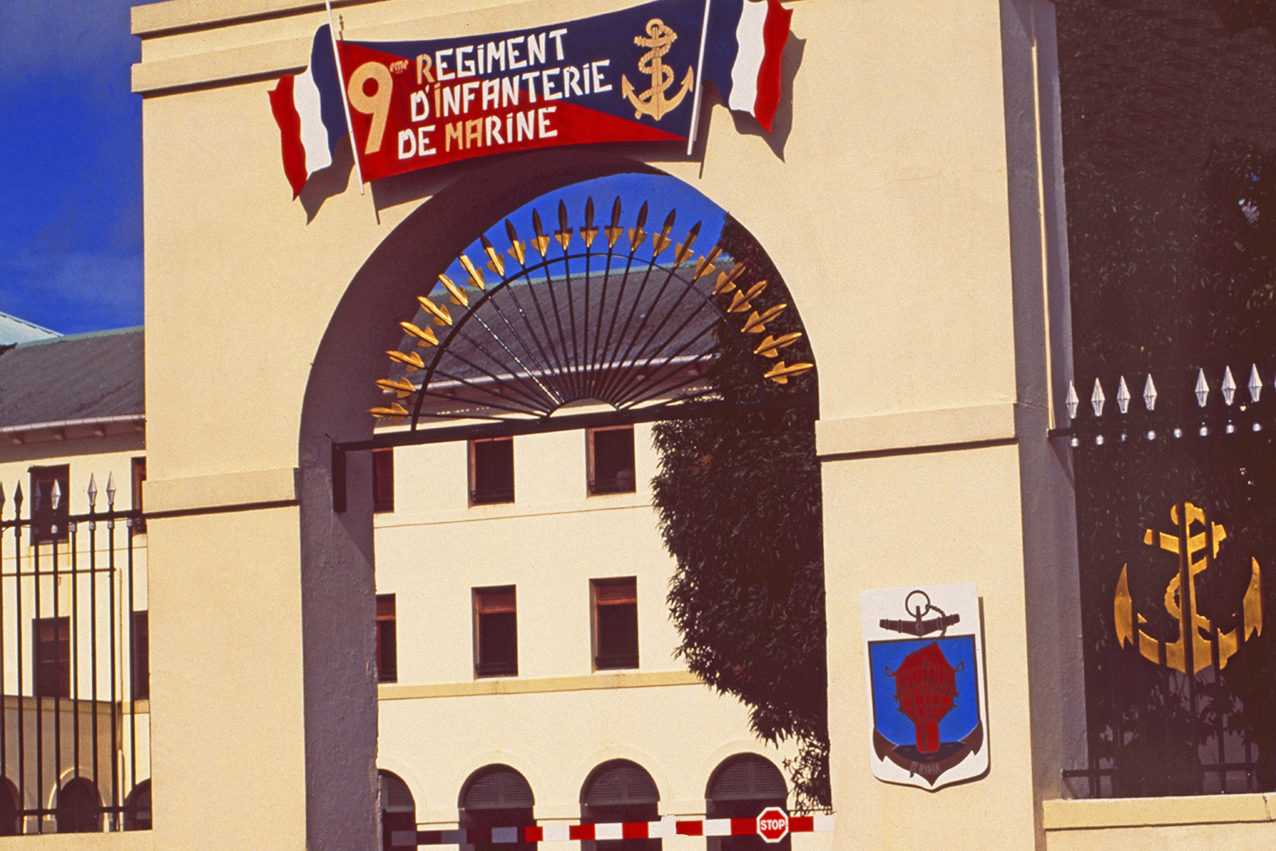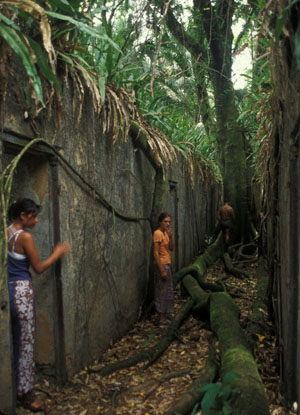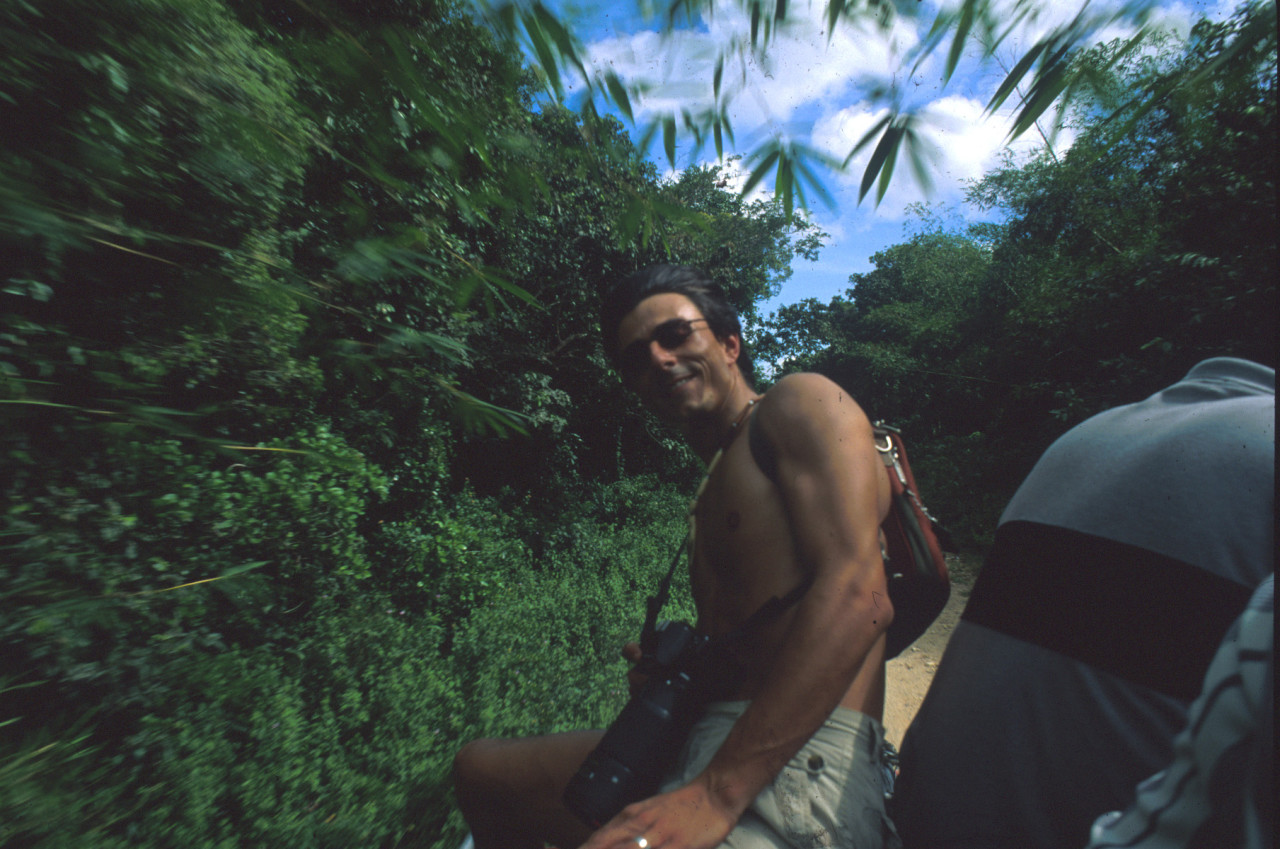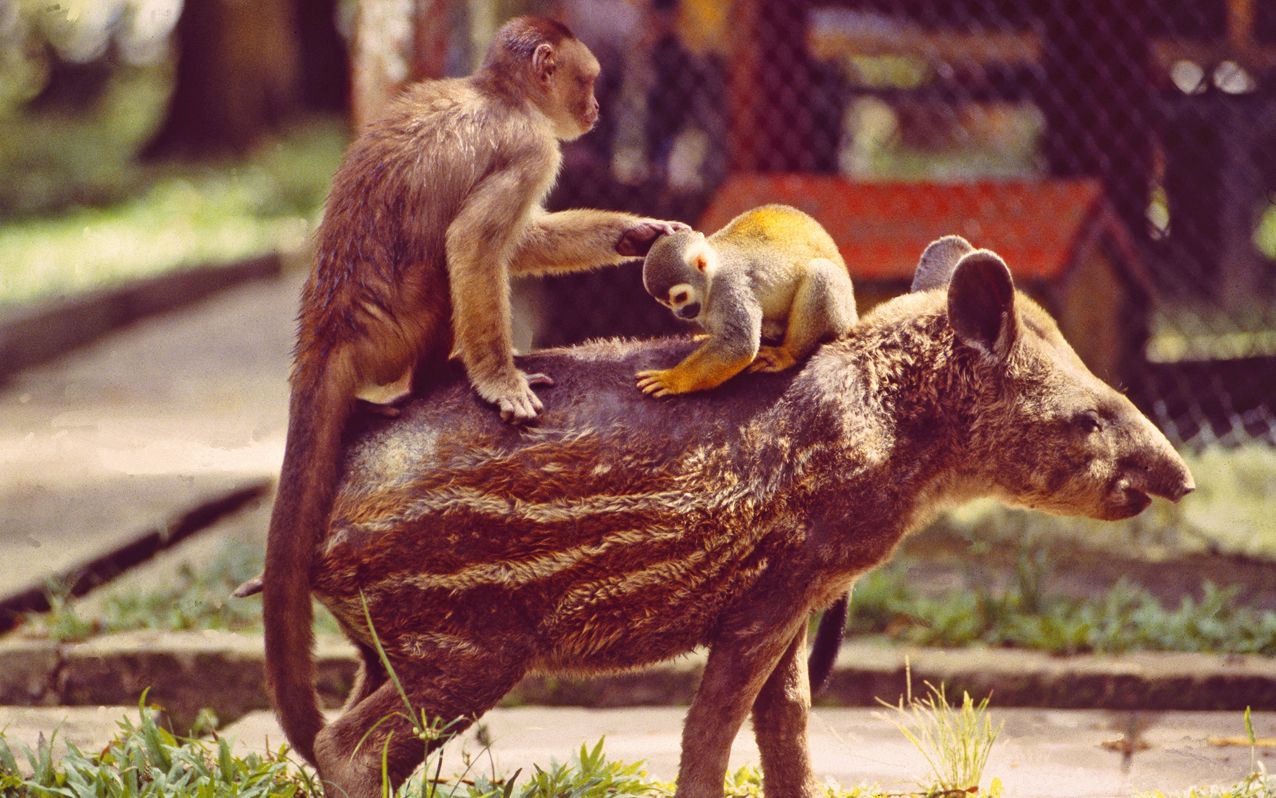
FOREWORD
The author, Gerd Michael Müller, born in Zürich in 1962, traveled as a photo-journalist to more than 50 nations and lived in seven countries, including in the underground in South Africa during apartheid. In the 80 years he was a political activist at the youth riots in Zürich. Then he was involved in pioneering Wildlife & eco projects in Southern Africa and humanitarian projects elsewhere in the world. As early as 1993, Müller reported on the global climate change and in 1999 he founded the «Tourism & Environment Forum Switzerland». Through his humanitarian missions he got to know Nelson Mandela, the Dalai Lama and other figures of light. His book is an exciting mixture of political thriller, crazy social stories and travel reports – the highlights of his adventurous, wild nomadic life for reportage photography .
(please note that translation corrections are still in progress and images will follow soon)
Thanks to the cooperation with the „AOM“, which connected the French Départements d’outre Mèr, i.e. French Guyana, Guadeloupe, Martinique, the South Seas or New Caledonia with Paris, I flew almost once a year to Cuba and was also briefly on Guadeloupe, three weeks in the South Seas, and now flying to French Guiana in the backyard of the Grande Nation, „where the pepper grows,“ where political prisoners have been exiled on an island and the European Space Agency (ESA) has set up shop in Kourou. The most exotic of all EU members is known at best through the movie „Papillon“, as a former penal colony, and so the image of French Guyana is also characterized by diffuse ideas and shimmering legends. Guyana’s reputation as a dangerous country populated with legions of poisonous insects, fearsome tarantulas, deadly snakes, meter-long aligators and piranhas is probably true, but beyond that, the country where Europe runs out and disappears into the green jungle thicket is one of the most stable in the region.
„The most dangerous creature here is man, followed by wasps,“ puts Philippe Gilabert, founder of „CISAME“ (Centre Initiation Survie et Aventure au Millieu Equatorial), an idyllic camp in the middle of green hell after about 60 kilometers of pirogue travel upstream on the banks of the Approuague near the Brazilian border, into perspective. „Humans,“ Gilabert, a former „Legion Etrangere“ paratrooper and terrorism expert, tells us, „are the most harmful creatures to the fragile ecocycle of the primary forest. Then would come the wasps, but they are a threat only to unwary humans, added the then 43-year-old Frenchman, who worked as a paratrooper and terrorism expert, wryly. He and Manoel, a Karipuna jungle Indian must know, because they specialize in bringing the wild jungle closer to as many civilized people as possible (than they actually care to) and offer 10 days of survival training to the toughest. So the civilization-impaired first practice archery, trapping, climbing, canoeing, fishing, making fire and building dwellings before having their own experience of what it’s like to have to survive in the jungle. So the jungle experts show the civilization-weary how to survive in the jungle and nature-lovers what treasures and functions the primary forest has and why it is absolutely necessary to protect it worldwide.
Among the guests of Mirikitares, the camp of the river people, as the Karipunas call this place, are reservists of European and North American armed forces as well as executives of companies who want to get their top shots in shape here. Even ordinary tourists are inspired to fulfill their dream and plunge into a daring jungle adventure. The fact that this is not just a macho world is proven by the growing number of women who come here and can often easily compete with us men in survival training. Either way, everyone gets to know themselves and their limits or abilities. The commitment goes to the substance of the mental and manageable, the survival mode switches on and amazing, existential insights open up to you. You suddenly realize how small and inconspicuous, how vulnerable and alone you are. You go from being the hunter to the hunted. A unique experience.
Having barely escaped the rainforest unscathed, new habitats open up, at least in the imagination, on a galactic trip to the moon, revealed to curious travelers in Kourou, not far from Guyana’s capital Cayenne, at the European Aerospace Center, the „Centre Spacial“ of the (ESA). So it is from here that the journey into space starts. The place itself offers nothing, except for the usual third-world view of the country’s class hierarchy. In the old town live the socially weakest, the Creoles, Indians and white unskilled workers, surrounded by out-of-place concrete buildings for the middle class, and on the beach the magnificent villas of the Europeans, scientists and employees of the space station in nearby Kourou.
After a visit to the European Union Space Station, I take a boat to Devil’s Island, a penal colony made famous by the movie Papillon. The three islands off the coast, Ille Royale, St. Jospeh and Ille Diable, where political prisoners were held for years by France in extreme conditions before ending up under the guillotine. Some, it is said here, would have preferred to be eaten by sharks while fleeing through the sea than to continue to suffer the earthly torment settled here. Guyana’s highlights include the country’s Wild West, especially the picturesque colonial town of St. Laurent-du-Moroni, on the border river with Suriname, which is well worth a visit. The colorful mixture of peoples, including Indians, raven pirogue drivers, bustling Indo-Chinese and Hmongs who came here via France to flee the Pol Pot regime, as well as Haitian cloth merchants, Dominicans and Creoles of all shades, and a few whites, was and still is impressively diverse.
On the last evening before our departure, we, a small group of journalists from Switzerland, trolled late at night through the harbor district of the capital Ceyenne and we were already quite drunk, after the humid happy rounds in some bars. Obviously, we had been observed, because at a rather dark intersection, suddenly from all sides a few sinister figures stepped out of the cracks of the houses quickly towards us. I could just warn my companions with a loud call, then someone coming from behind sprayed tear gas into my eyes, whereupon I could see nothing more and inhaled the irritant gas coughing. I whirled around like a dervish and began to swing my camera equipment around to keep the three attackers at a distance, whom I could see only dimly. Then I broke through on one side and ran up the street until I was out of breath and out of range of the gang. My colleagues were also lucky and managed to fight back and save themselves from the attackers. With this adventure behind us, we left the country the next day and flew back to Switzerland.
On one of the first of a total of five trips to Brazil, after Iguaçu Falls, Rio de Janeiro and Buzios, I also discovered Salvador de Bahia, the landing place of the Europeans and the first capital of Brazil. If you want to experience the exotic facets of Bahian life, be prepared for hot pickup lines, cool rejections and delicious alcoholic consolations, at least during Carnival. If you dive into the mystical world of Candobléein and let yourself be overwhelmed by the overwhelming spirituality, leave the local world and get into a trance to ecstasy. Candomblé is a Brazilian religion that has its roots and cradle in West Africa. The saints Orixá, Nkisi or Vodum are, in contrast to the supreme god Olorun, so to speak „approachable“. Most enslaved Africans came from Nigeria and Benin and were influenced by the Yoruba and Bantu traditions. During a Candomblé rite, a saint can take possession of a person. The roots of the slave tower are deeply rooted in the local culture. However, they are often lived out in secret. But when hundreds of powerful gospel voices resound from full fervor and the percussionists begin with their drum rhythm, then not only the earth trembles, but also the air vibrates in the far periphery, as with a howling hurricane. This makes the psalm-screeching Catholic boys‘ choir in the Sao Fransico monastery in the baroque old town district of Pelourinho sound rather pitiful.
A trip to Salvador de Bahia is therefore like setting out for new shores. First of all, it is admirable how elated the Baihanos go through life. Remarkable how they express their joy and sorrow. The mystical world of gods and the spiritual source of the Bahanos is reflected in Candomblé, which gave reason for the Christian mission, especially since Bahia was the starting point of the western explorers and conquerors. The bastions along the coast are not the only evidence of this. In Salvador de Bahia, the cradle of carnival and samba, there is no standing still and no stiff posturing. Everything is in flux, everyone is constantly on the move, more or less gracefully. It is rare to discover such a playful people, who have produced an unbelievable number of talented dancers and musicians.
Another Bahian specialty is capoeira, the martial art disguised as dance. Here, too, the gracefully flowing movements are recognizable, flowing through their whole lives and triggering impulses. But not only in expressing feelings also the body cult is on top of the agenda, in this the Bahianos hardly differ from the Cariocas. There is hardly an Adonis who does not present his athletically steeled body in his skimpy briefs. There is not a single woman who does not proudly walk on the beach in her „Fio dental“ bikini, flirting with her gracefulness and permissiveness. No wonder the church has sent more friars here than anywhere else in the world. In Salvador de Bahia alone, 165 houses of worship have been built.
In 2003 I was stationed for three months as a resident manager for a Swiss travel company in Fortalezza in the northeast of Brazil and had a truly good time there. Few guests, so almost no stress, a hotel room right on the Beira Mar (that’s like the Copacabana in Rio) furthermore I had a good vehicle with which I could drive to Jericoacoara to the fantastic sand dunes or south to Moro Branco. I was very attracted to the Brazilian lifestyle, music, language and culture on previous trips, which also helped me learn a little Portuguese. Since I spoke passable Spanish, it was easy for me to get into Portuguese and I like the Brazilian dialects better than the harsh Spanish accents. I am also enchanted by the music of many Latin American sounds: from the tango in Argentina to the bossa nova of a Gilberto Gil in Brazil or the folk dance forro, as in Fortalezza, from the salsa and son in Cuba to the merengue in the Dominican Republic.
In Fortaleza, during these three months, I lived as Station Manager at Beira Mar, ideally located for daily trips to the most beautiful city beach, Praia do futuro, and at night to Iracema at the end of Beira Mar, where the tourist entertainment district was located with all the nightclubs, which was very convenient for local tourist services. At the end of the three months I was shipped off to Sinai, but after the six month assignment in Sharm el Sheikh, returned to Fortaleza unemployed because the tsunami had hit Asia and as a result all the tour companies needed fewer Station Managers and Tour Guides.
Upon my return to Fortaleza, I first lived and stayed for two months in the Favela Serviluz with a friend who had a small brick house near Praia do Futuro and felt quite comfortable there. Soon, via Heldon and his friend Joaquin, I knew many people and the neighbors in the favela knew me as well, so I was able to move freely there day and night. It was a comfortable time, because I had made good foreign exchange deals with the tourists in Sinai and before in Brazil. This was always a tolerable source of extra income with these jobs. In Poland, I almost became a zloty millionaire. Then a friend from Switzerland visited me and we rented a „Highlux“, an off-roader, to drive along the Brazilian coast from Fortaleza in the state of Céara via the states of Maranhão and Piaui up to Manaus and then to complete the return journey inland.
That’s a good 6000 kilometers we wanted to cover in 11 days. The off-road driving was more comfortable than driving on the asphalt road, which was completely littered with holes up to half a meter deep. The asphalt looked like it had been bombed over a wide area, which is why I often drove on the scree strip to the right of the road. There one comes in principle faster ahead and whirls up strongly dust, which is to be seen already from a distance and prevents the accident danger. The journey went through Jericoacoara, with its fantastic dune landscape, which was surpassed in beauty by the crystal clear lakes in the sand dunes in the next state of Maranhao. An extremely fascinating region! The deep blue Atlantic with lonely dream beaches to the left, a gigantic sand dune strip along the coast and inland the esmerad green jungle. The national parks of Jericoacoara and Lençóis Maranhenses on the Atlantic coast are unique biotopes worth preserving.
I like deserts better than virgin forests. One gets along better. At least in 4×4. But even here, I would have been stranded without the help of local fishermen, because on this trip numerous rivers had to be crossed. Except for the one time it worked quite well, until we came to a river that was shallow on our side only about 30 meters, then there was a small sand island just before the place where the river flowed through a narrow mouth, like a funnel, much more tearing. You could just make that out from 40 meters away, and it was probably the most dangerous part. „If I couldn’t cross at full throttle the last ten meters after the tiny river island,“ it would look bad, I thought. And that’s exactly what happened. I drove with a lot of speed through the 30 meter wide, shallow river towards the island, but got stuck there due to the incline, had too little momentum to cross the current channel and was soon stuck with the hood at a 45 degree angle to three quarters in the water. After a few hours, a couple of fishermen came along. Only thanks to a boat in the current channel that lifted the car a little and a car that pulled us back from behind with the wire rope over the shallow part of the river, we managed to get out of the river.
Another time, when I was just out on my own in the sweltering midday heat, I got stuck in deep quicksand. I was shoveling like a madman in the scorching hot sand and didn’t think I would make it. It took four hours, many drops of sweat and endless jerks for a few meters further, but finally it worked out. And so the journey continued to Ilha de Maranhão, one of the largest alluvial areas in the world at the foothills of the Amazon. 800,000 buffalo populate the island, which belongs to only a few hundred large landowners who hardly employ any workers. Where the animals traverse in the dry season, a river course emerges in the rainy season. Thus, the fragile ecosystem and the thin layer of humus is destroyed in just a few years. Year after year, huge areas of virgin forest are being appropriated first for cattle breeding and then for intensive agriculture such as soy plantations. In the past 30 years, almost a quarter of the Amazon Delta has been destroyed. This is a catastrophe, because the incomparably high biodiversity is also seriously threatened here. In the Amazon alone there are over 2000 different fish. For comparison: In the whole of Europe there are just 150 species of fish. The same is true for all other animal species, most of which are endemic. The adventurous journey continued through the state of Piaui and from there we drove on to Manaus. Then another good 3000 kilometers inland back to Fortaleza, where we visited the Gruta de Ubajara, Brazil’s largest caves with nine chambers and a depth of a good kilometer, at the Ubajara National Park, about 300 km west of Fortaleza. Now we come to the last and most special of my Brazil trips and my only cruise.
